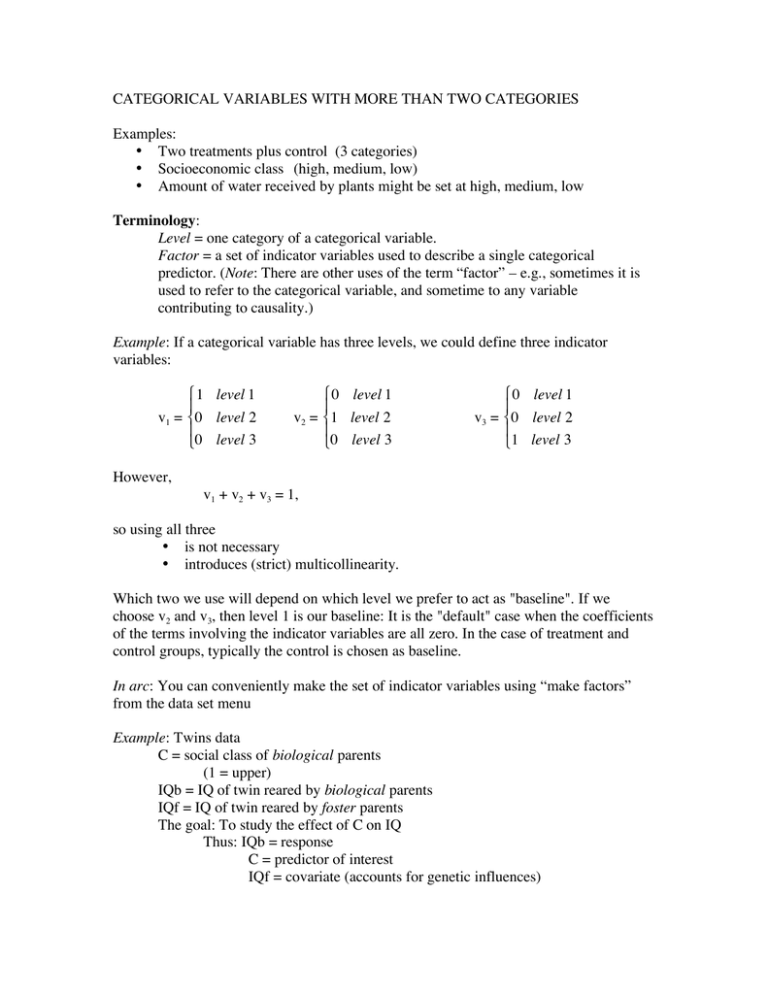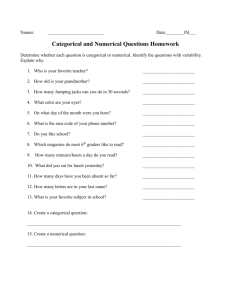CATEGORICAL VARIABLES WITH MORE THAN TWO
advertisement

CATEGORICAL VARIABLES WITH MORE THAN TWO CATEGORIES Examples: • Two treatments plus control (3 categories) • Socioeconomic class (high, medium, low) • Amount of water received by plants might be set at high, medium, low Terminology: Level = one category of a categorical variable. Factor = a set of indicator variables used to describe a single categorical predictor. (Note: There are other uses of the term “factor” – e.g., sometimes it is used to refer to the categorical variable, and sometime to any variable contributing to causality.) Example: If a categorical variable has three levels, we could define three indicator variables: " 1 level 1 $ v1 = #0 level 2 $ %0 level 3 " 0 level 1 $ v2 = #1 level 2 $ %0 level 3 " 0 level 1 $ v3 = #0 level 2 $ %1 level 3 However, v1 + v2 + v3 = 1, so using all three • is not necessary • introduces (strict) multicollinearity. Which two we use will depend on which level we prefer to act as "baseline". If we choose v2 and v3, then level 1 is our baseline: It is the "default" case when the coefficients of the terms involving the indicator variables are all zero. In the case of treatment and control groups, typically the control is chosen as baseline. In arc: You can conveniently make the set of indicator variables using “make factors” from the data set menu Example: Twins data C = social class of biological parents (1 = upper) IQb = IQ of twin reared by biological parents IQf = IQ of twin reared by foster parents The goal: To study the effect of C on IQ Thus: IQb = response C = predictor of interest IQf = covariate (accounts for genetic influences) !


